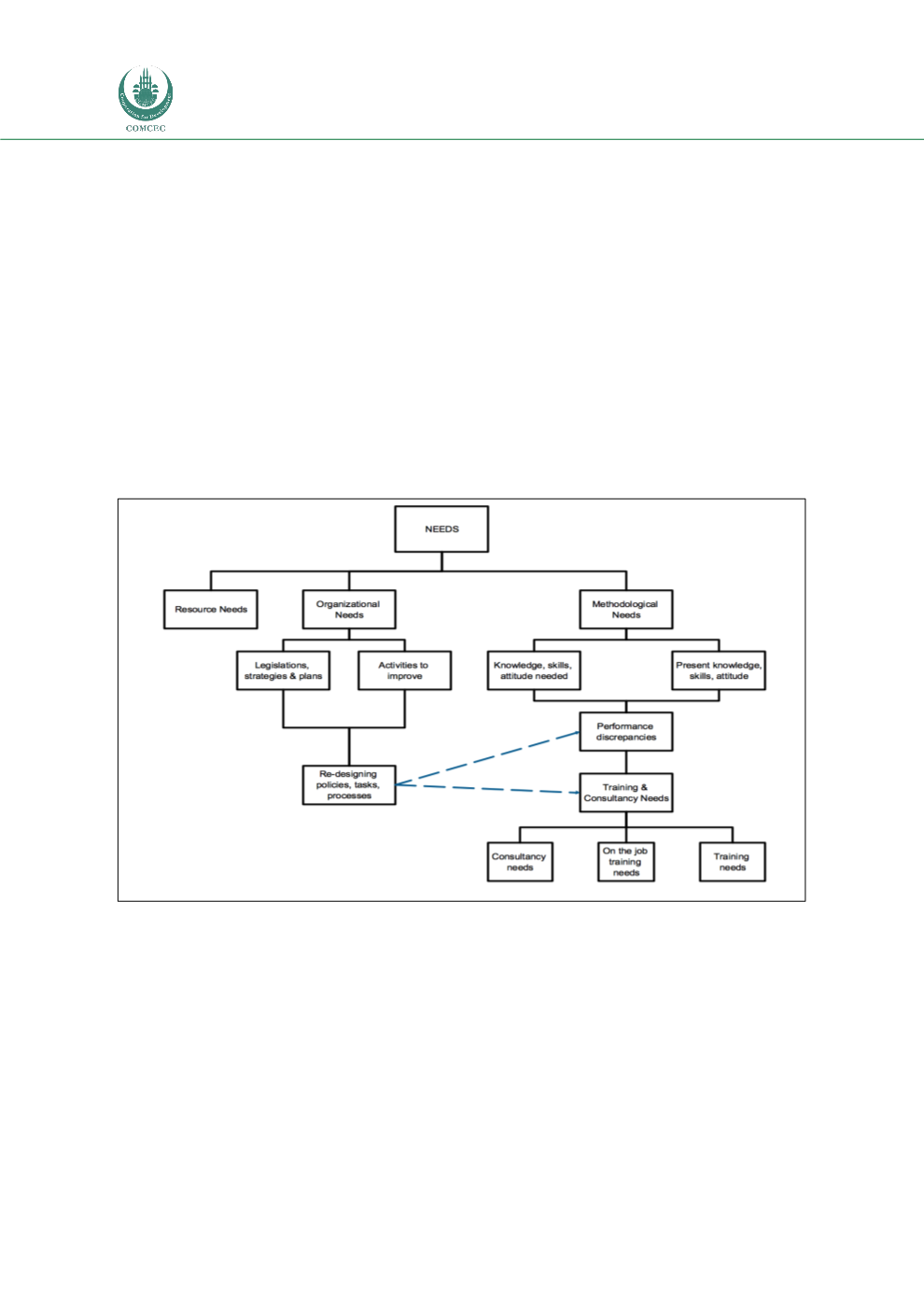

Improving Agricultural Statistics in the COMCEC Region
140
communication technologies, periods of main surveys and censuses, and growth of agricultural
markets.
The most important finding is that countries in which case studies were conducted mainly
experience strengths, weaknesses, opportunities and threats relating to resources and
organization, and partly on methodology. Data to be published on time (timeliness), easy
access to users (availability) and the scope of output were of lesser concern. IASD, on the other
hand, showed that the weakness in COMCEC Member Countries related to user accessibility
and the coverage of products. This is an important finding as it shows the difference between
problems that exist and those believed to exist.
Figure 12 focuses on the system and staff needs, which are required for the purpose of
producing comparable agricultural statistics amongst COMCEC Member Countries, and
subsequently to build a common strategy for food and agriculture.
Figure 12: Needs Assessment
A needs assessment identifies and describes what needs to be done; it does not identify or
describe how it should be done. It is very difficult to evaluate the evolving needs for
agricultural statistics. The main problems cited in all countries visited are inadequate
resources and using the traditional methods for collecting, analyzing and disseminating data.
What is needed is a fundamental change in mentalities of all people involved in the collection,
analysis and dissemination of agricultural statistics. Moreover, what is required is a higher
level of accountability to government and other users in terms of delivering agricultural
statistics of appropriate scope, quantity, quality and timeliness.
Needs assessment which does not contain subject-based deep analysis, but general needs
which can be classified under;

















